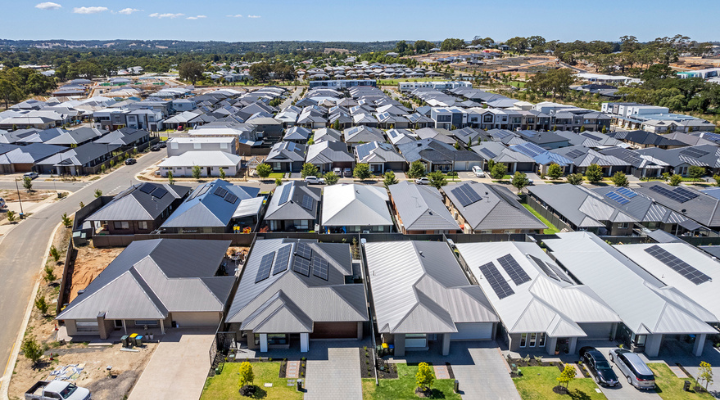Australia’s net migration topped 660,000 people to the end of September 2023 with Perth, Melbourne and Brisbane all exceeding 3 per cent. The three largest cities (Melbourne, Sydney and Brisbane) all experienced growth in particular outer suburban corridors in western Sydney, western Melbourne and southern Brisbane.
It is all too easy to look at new growth corridors as a business owner and see nothing but untapped opportunity. A sea of shiny new dwelling roofs as far as the eye can see surely equals money to spend for any aspiring retail and service business – right? Where is the lease – where do I sign?
Not so fast though. All too often the perceived opportunity does not match the reality in new estates – especially in the first few years of trade. Many businesses have been stung by entering these areas too early, then having to weather a period of substandard trading before performance meets expectation.
Potential pitfalls in new growth areas
The reality is that there are a number of potential pitfalls to be aware of when considering entering new housing growth areas.
Over-estimating population growth
Firstly, it is all too easy to over-estimate the level of growth in dwellings and population when we drive through an area of new housing development. The perception of a sea of new homes does not always equate to the population you think it might. The lack of trees in these areas typically creates a perception of a great many houses stretching to the horizon, but the reality of how much population that actually represents might be significantly lower than it first seems.
In this sense, it pays to not trust the eye, but rather research the reality of the current population, and speed of growth. Adding to this, there is often a lag between home builds and when residents are actually living in a home.
Over-estimating demand
Secondly, these areas usually have a significant outflow of activity during the day. New residents are often working significant hours in jobs away from the area when they first move in, having moved from elsewhere and working hard to pay for their new dream life.
Often young couples buy a new house before having kids, so initially there is no demand for family-oriented products and services.
Additionally, new growth suburbs develop in areas with little employment. The exception to this is the tradies building the homes, but other than buying a lunch or drink nearby, they are unlikely to spend significantly in the area. The establishment of businesses expecting significant trade during the day can be fraught in these areas in the early years.
Over-estimating disposable income
Thirdly, disposable income is typically very low in these areas. The combination of a new mortgage and the need to spend on the endless small things a home needs once built sees the amount of discretionary spend drop away very significantly.
People are creatures of habit, and will take time to change their shopping and spending behaviour. This is particularly the case with regular shopping trips, like grocery. The establishment of a shiny new local neighbourhood shopping centre for instance might seem attractive on the surface, but in reality it will take time for some locals to switch to new stores. Many will favour their usual, familiar shopping destination for a time.
The wrong timing
Lastly, retail centres will often establish with an eye on the fully developed suburb, so contain greater lettable retail space than the area justifies on opening. This can mean a hard slog until the area develops. As the area matures, the need for health services increases so medical centres, dentists, and daycare facilities will be in demand.
Finding the real opportunity
These service businesses often delay moving into a growth area until there is a reasonable population base to create enough demand. This often means people need to travel longer distances to find these services, so this also needs to be taken into consideration if considering opening a new facility.
However the right sort of business can certainly work in these areas. For instance, a value driven, dinner focused quick service restaurant brand might perform really well. People need to shop for prepared meals locally, they are time poor and limited on funds, and likely to seek a quick cheap evening meal.
The key is to go into these opportunities with eyes wide open as to the real opportunity, and the potential pitfalls.








